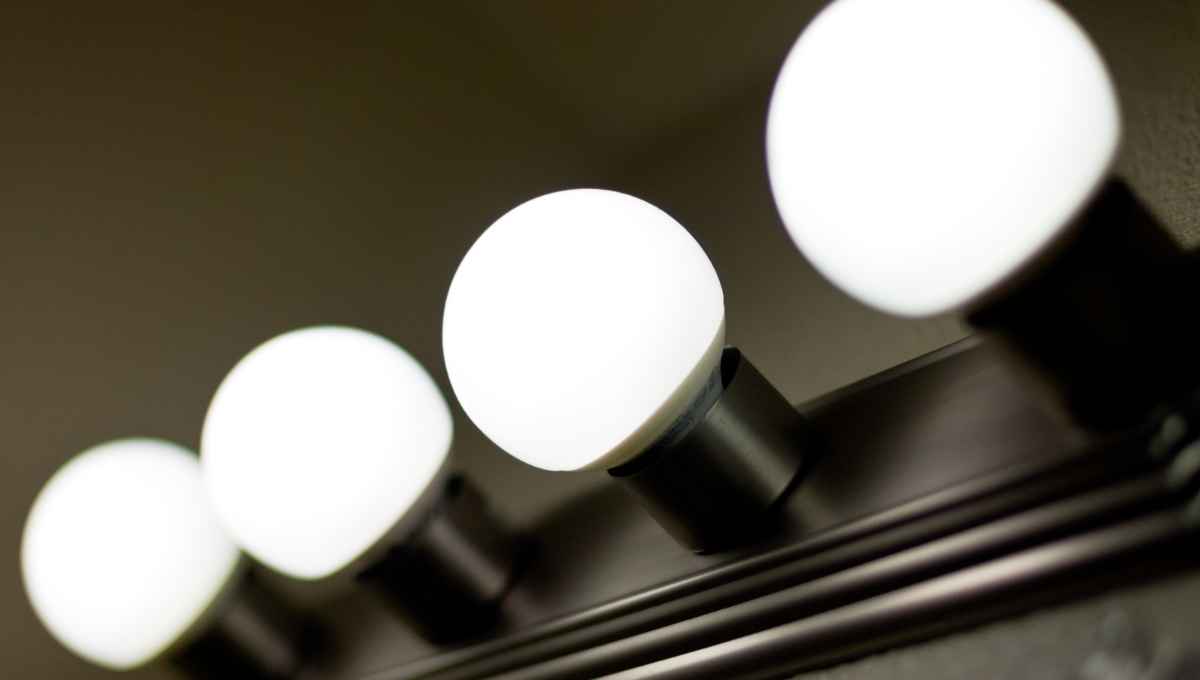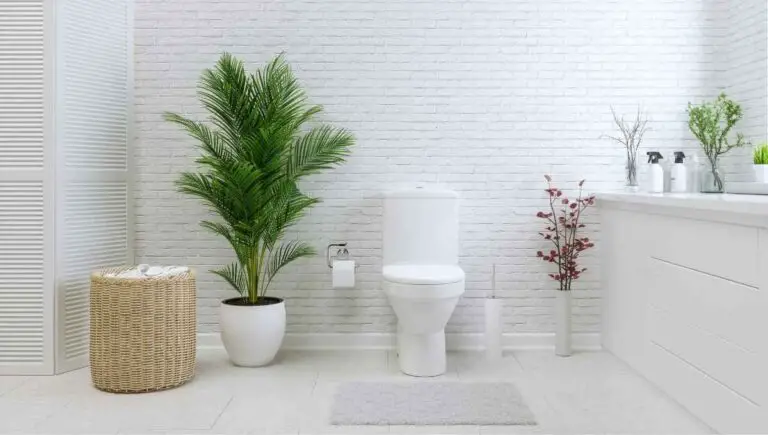Do Bathroom Lights Have to Be GFCI Protected? (We Checked)

Protecting your bathroom lights against electric mishaps is essential, especially if you want to avoid GFCI (ground fault circuit interruption). We know that regular outlets need protection. But, do bathroom lights have to be GFCI protected? And if so, how do you protect them so that you avoid an electric short?
Bathroom lights aren’t required by the National Electric Codes (NEC) to be GFCI protected, so you’re allowed to install bathroom lights that don’t have protection. However, that doesn’t mean that bathroom lights shouldn’t be protected. Unprotected bathroom lights can pose a serious threat to your safety in the case of an electrical short.
Your bathroom lights may not need protection, but it’s still important that you consider securing them so that they don’t become hazardous over time. So, in this article, we’ll speak about what GFCI is, how it helps you protect your home, and what other lights of your home need protection.
This post contains affiliate links. This means Household Blogger may earn a commission should you make a purchase using any of our links. Please refer to our full affiliate disclosure policy for full details.
Here’s a Quick Pro Tip!
There’s no law against leaving your bathroom lights unprotected. Still, GFCI protection is easy to install and is required for bathroom outlets. So, you should consider installing GFCI protection in your home to avoid any risks.
So, here are some safe GFCI breakers and outlets for added protection:
1. ELECTEK GFCI Receptacles – The easy, and safest option.
2. Siemens GFCI Circuit Breaker – A great choice for straightforward protection.
3. Siemens AFCI/GFCI Dual Breaker – Don’t have just one. Have two! What’s better than this GFCI and AFCI dual breaker?
All About GFCI Protection And Regular Circuits
GFCI is commonly used to protect outlets and other fixtures in the case of an electrical short. They differ from regular circuits in only a couple of key ways. You’ll learn all about it in this section!
What Is The Purpose Of a GFCI?
A GFCI (also known as a ground-fault circuit interrupter) has the purpose to turn off electric power in the case that there’s a threat of a ground fault happening. It’s designed to keep buildings safe, and it’s required by the NEC in many situations.
GFCIs can keep an entire branch circuit protected. These circuit breakers work quickly, and they can turn off power within 1/40th of a second. So, that gives a GFCI a very important role within homes and other types of buildings.
According to OSHA, they work by measuring the amount of power a piece of equipment sends and receives. If the difference between those two amounts differs by around 5 milliamperes, the GFCI kicks into action and will stop the power, protecting your home in the process.
What Is The Difference Between a GFCI Outlet And a Regular Circuit?
The difference between a GFCI outlet and a regular circuit is their function. Regular circuits don’t have any special protection against electric shorts, as GFCI outlets do. In short, GFCI outlets can protect against electric shorts, but regular ones can’t.
To see the difference between the two, you just have to look at them by checking the outlets in your home. Usually, GFCI outlets have a black “test” and a red “reset” on the front of them.
If you go around your house and check your outlets, you’ll notice that bathrooms and kitchens will have GFCI receptacles, unlike the rest of the house, which just probably has regular ones.
Additionally, you can actually get an entire GFCI breaker panel for the entire circuit. These panels are larger and have extra switches, and can protect everything connected to the circuit.
That means you’ll have every lighting fixture and appliance protected, not just the outlet!
How Do I Know If My Outlet Is GFCI?
You can tell if an outlet is GFCI protected by looking at the front. GFCI outlets (also known as GFCI receptacles) always have 2 buttons on their faceplate. One button, which can be a red or white color, says “reset”. The other, a black one, says “test”
Typically, you can identify which outlets are GFCI protected and which ones aren’t just by looking at them. GFCI outlets are easily identifiable because it has features that regular outlets don’t, just like these two buttons that work for a unique purpose.
One thing to make note of is that you’ll usually find GFCI-protected outlets in your bathrooms and kitchen, while the rest of the outlets in most houses are just regular ones.
This is because bathrooms and kitchens are in greater threat of having a short-circuit.
What Should a GFCI Be Used For?
GFCI receptacles (commonly called outlets) and GFCI breakers should be used for kitchens and bathrooms. GFCIs are made to protect outlets as well as entire circuits from experiencing an electrical short in the case of a ground fault.
Kitchen and bathrooms can be at more risk of suffering from an electrical short, so it’s best to use GFCI outlets in those spaces.
GFCIs are a type of circuit breaker. This means that they shut off the power when there’s the risk of a short circuit. Some locations around the home require GFCI protection by the NEC because of their relation to home safety.
You can functionally protect your home by installing either a GFCI receptacle or a GFCI breaker. Although, GFCI breakers tend to provide wider protection.
You might also enjoy our post on Can a Vacuum Cleaner Electrocute You
GFCI Protection In Bathrooms and Bathroom Lights
Bathrooms are susceptible to safety risks, like electric shorts that provoke electrocution, because of water and moisture. In other words, GFCI protection in bathrooms and bathroom lights is crucial.
So, let’s talk about the importance of protecting your bathroom below.
Do Bathroom Lights Need To Be GFCI Protected?
Bathroom lights don’t need to be GFCI protected because there is no requirement or legal regulation for them to be so. Even then, you must consider protecting your bathrooms because of how vulnerable they are to electric shorts.
If you already have a GFCI breaker installed, you don’t need to worry about protecting your bathroom lights. GFCI breakers will work for the entire circuit, so everything that is connected to the circuit (lights, appliances, and other fixtures) will be safe.
Can I Put Bathroom Lights On GFCI?
You can put bathroom lights on GFCI. To do this, just install a GFCI breaker to your circuit. These breakers will protect your bathroom light’s entire circuit, so you don’t have to work hard to protect each bathroom light separately.
Of course, you don’t need to install a new GFCI breaker if you already have one. The only thing to remember is that a GFCI breaker will only impact the circuit that it’s connected to. This means that anything connected to a different circuit won’t be protected.
Many homes have a circuit specifically for lighting, so make sure you install the GFCI breaker to the lighting circuit to protect things like bathroom lights.
Do Bathroom Lights Need To Be On a Dedicated Circuit?
Bathroom lights don’t need to be on a dedicated circuit. According to the 2014 NEC, all bathroom fixtures should be on their own branch circuit. Additionally, non-bathroom lights can be on a circuit with all of the other lights and outlets in a home.
The only single devices that the NEC requires to be on their own dedicated circuits are major fixed appliances.
This includes things like fridges, oven ranges, and furnaces. Aside from single devices, at-risk areas like bathrooms and kitchen counters need to have their own dedicated circuits.
That doesn’t mean that every individual device in the bathroom needs to have a separate circuit, but that everything in the bathroom must have a dedicated circuit.
Does Everything In a Bathroom Need To Be GFCI Protected?
Not everything in a bathroom is required to be GFCI protected. In fact, only outlets are regulated when it comes to GFCI protection. At least one outlet (or more, depending on area) needs to be GFCI protected.
That’s really as far as the rules for GFCI protection in bathrooms go. Aside from outlets, other bathroom fixtures don’t need to use GFCIs.
If you’d like to make sure everything in your bathroom is protected, you’ll need to install a GFCI breaker on the bathroom’s electrical circuit.
You might also enjoy our post on Can You Vacuum a Wet Carpet
Can Bathroom GFCI And Light Be On The Same Circuit?
Bathroom GFCI and light can be on the same circuit. GFCI breakers are installed into a specific circuit, and anything connected to it is likewise protected. Since bathroom lights are usually included on the bathroom circuit, GFCI can protect anything inside.
Light fixtures and outlets are usually the only two electrical fixtures that are in a bathroom. GFCI protection can be used for both of these things, either separately or together. The NEC requires that bathroom outlets are GFCI protected.
For bathroom lights, installing a GFCI breaker to the entire circuit is all you need to do to stay protected.
What Is The Electrical Code For Bathrooms?
The electrical code for bathrooms establishes that they must be on a separate electrical circuit branch. The NEC is the one that regulates these measurements to ensure the protection of the electricity, especially because of their exposure to moisture.
Additionally, all bathroom outlets should be GFCI protected. The exact requirements for GFCI protection vary depending on the state, but usually, GFCI is only regulated for bathroom outlets and not for other bathroom fixtures.
This implies that the bathroom lights or any other appliances don’t need to be necessarily protected with GFCI. But, for bathroom outlets, it’s a requirement.
Does The NEC Have a Requirement For GFCI Protection In Bathroom?
The 2020 NEC changes require that bathroom outlets are GFCI protected. GFCI receptacles or outlets must replace the regular outlets in locations that are vulnerable to water. Even though a full GFCI offers more protection, it’s not required by NEC.
Bathroom fixtures like lights don’t actually need to be covered by GFCI protection, according to the NEC.
The NEC’s regulations really only apply to outlets in the bathroom, and they can vary depending on where you live. Different locales use different versions of the NEC rules.
What Are The Requirements For Bathroom Lights?
The requirement for bathroom lights is that, at least, there is one light in a bathroom. You can add multiple bathroom fixtures, so long as you fulfill the main requirement. Bathrooms also must have their own dedicated circuit branch, according to NEC.
Something that the NEC doesn’t require is GFCI protection for bathroom lights- or exhaust fans, for that matter. The NEC regulates that there should be at least one GFCI-protected outlet, and some jurisdictions insist on more than one protected outlet.
Interestingly, this rule doesn’t apply to bathroom lights. Legally, it’s only required for bathroom outlets to be GFCI protected. So, make sure to remain compliant with these laws.
Do Lights In a Bathroom Need To Be IP Rated?
Lights in a bathroom need to be IP rated because it will ensure that they are protected correctly from grime and water, which is a common thing to find in bathrooms. The higher the IP (Ingress Protection) rate, the higher the protection it has.
To comply with these requirements, you should aim to use lights with ratings between IP45 and IP65, such as this one.
As with all regulations, you must make sure to check the regulations in your area so that you don’t make the mistake of breaking the law.
Additionally, going with the minimum required IP rating isn’t always the best idea. Just because the legal minimum is low doesn’t mean that you’ll need a lower IP rating. It’s best to choose higher IP ratings because they are important for warding off safety risks.
Installing GFCI Protection To Your Light Fixtures
Understanding the importance of GFCI protection is essential. And now that you know how this protection works, we can now take look at how you can actually install GFCI to your outlets, bathroom, and light fixtures.
How Do You GFCI Protect a Light?
To protect a light with GFCI, you need to install a GFCI breaker to the electrical circuit that its fixture is on. Most homes have their lighting fixtures on one same circuit, although sometimes this varies. For instance, bathroom fixtures tend to be separate.
You can install GFCI breakers by following a relatively quick and simple process, even if you have no prior electrical experience. Still, you must make sure to know what you’re doing before you begin to try and install a GFCI breaker.
After you install your GFCI breaker, though, everything on that circuit will be protected! This is great news for anyone worried about electric shorts.
Can I GFCI Protect a Light Myself?
It’s possible to GFCI protect a light on your own without the help of an electrician. It might still be wise to get the help of an electrician if you have no experience with electrical work, but installing a GFCI breaker is normally a task you can do by yourself.
The first step is to actually purchase a GFCI breaker. This breaker can be used on an entire circuit and will protect everything connected to it, so you don’t need to individually GFCI protect a light.
Just make sure to install the GFCI breaker in the correct circuit. Bathroom fixtures are often on their own separate circuit, while all other lighting fixtures are on the main circuit.
Should I Hire An Electrician To GFCI Protect My Bathroom Lights?
You should hire an electrician that can GFCI protect your bathroom lights if you don’t have any experience with how to install them. Usually, it’s a simple task that you can do on your own, but it’s better that a professional does it.
There are really only three things that you need to connect in order to install a GFCI breaker. Before you try to, just brush up on your knowledge of GFCI breakers and how to connect them to the circuit.
All things considered, it’s not likely that you will need to hire an electrician to do the job! You can even order GFCI breakers easily off of Amazon, such as this reliable Siemens breaker.
Related Questions
Do Bathroom Lights Need AFCI?
Bathrooms don’t need AFCI, and they are not required for any outlets or fixtures inside. GFCIs, on the other hand, are required for at least one bathroom outlet. So, you won’t get in trouble for not having AFCI, as it isn’t regulated by NEC.
Make sure that you have checked which rules your area follows. NEC guidelines are updated every 3 years, and different governments only adopt certain versions of the NEC rules.
This means that there’s a lot of variation within the US as to what is necessary and what isn’t.
Can An AFCI Replace a GFCI?
An AFCI protector can’t replace a GFCI, at least not in the bathroom. Although they have similar jobs, only GFCI receptacles/outlets are required by the NEC. AFCI can be very helpful to use for a bathroom, but it’s not a replacement for GFCI.
It’s disappointing to know that you can’t swap out a GFCI with an AFCI, but not all hope has been lost. If you really want to use an AFCI, there’s always the possibility of getting a dual-function circuit breaker like this one.
These breakers use both GFCI and AFCI for maximum protection. So, you’ll get to enjoy the benefits of AFCI while still remaining compliant with the codes established by NEC.
Why Is AFCI Not Required In Bathrooms?
The reason for NEC to not require AFCI in bathrooms isn’t entirely known. However, many electricians have explained the problem that AFCI has. AFCI sometimes does a nuisance tripping, which can be troublesome for homeowners.
The NEC outlines many rules for safety and electricity in the home, but NEC regulations need to be adopted by governments in order to be put into effect.
The more regulations there are, the more expensive homes on the market are, which can cause pushback.
It’s possible that GFCI requirements in bathrooms were as far as the NEC could push the governments to go. Different places have adopted different versions of the NEC, which is a clear sign of how difficult it can be to get everyone to agree!
Additionally, electricians prefer GFCI over AFCI protection. This is because AFCI often causes something called “nuisance tripping”.
In short, the AFCI breaker will stop working out of the blue. The problem resides in the quality of the breaker, or in the lack of compatibility it has with many devices. If your devices aren’t fitting to AFCI, they will start to act out and trip for apparently no reason.
Final Thoughts
GFCI protection is required by the National Electric Codes because they help ensure the safety of a bathroom. Installing one in your home can guarantee the safety of you and your loved ones since it can prevent fire hazards.
Luckily, GFCI protection is required exclusively for bathroom outlets, and not bathroom lights. Knowing this positively adds you mental peace and pocket safety!
However, it’s still a good idea to consider installing GFCI protection in your bathroom fixtures for the sake of safety. You can buy one anywhere, or online. Yet, at the end of the day, it’s your ultimate choice.











